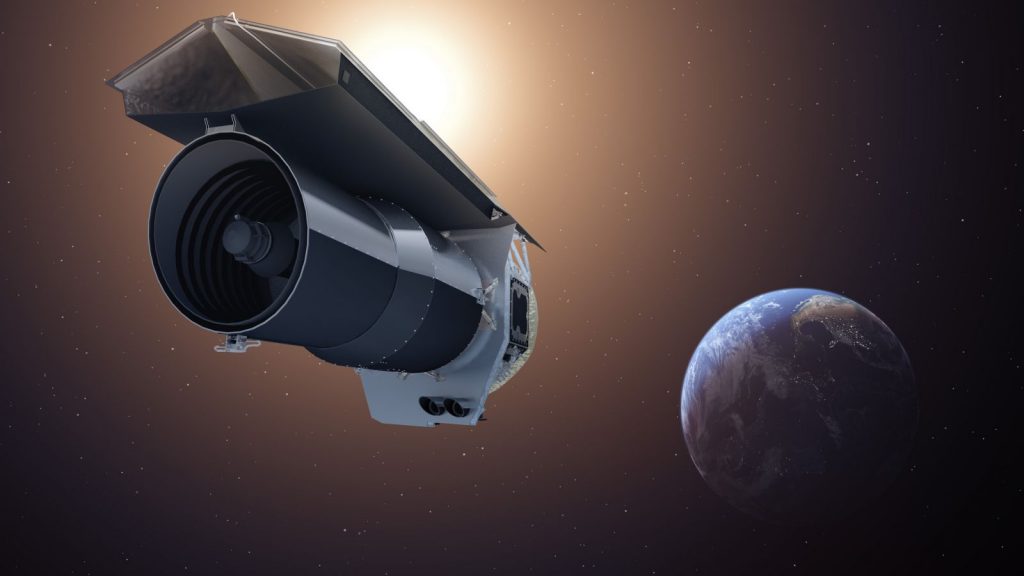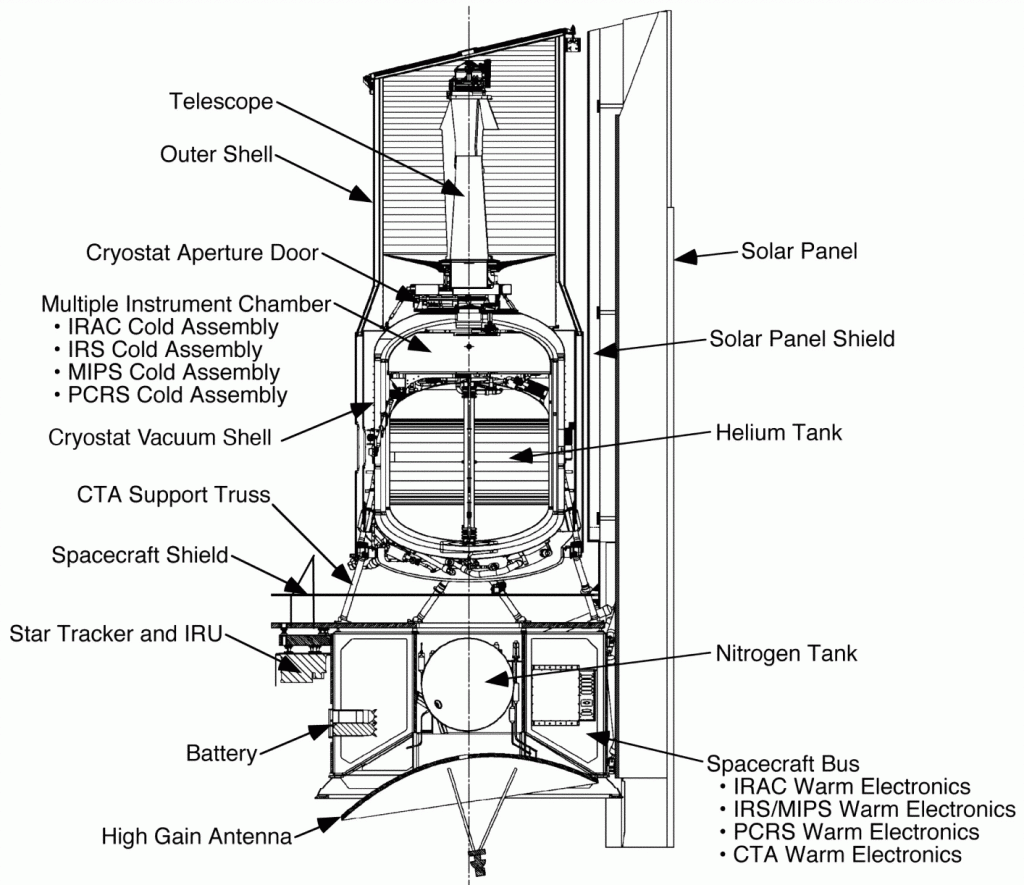The Spitzer Space Telescope was launched into space on 25 August 2003. Consisting of a 0.85-meter telescope and cryogenically-cooled, Spitzer was the largest infrared telescope ever launched into space at the time, designed to study our Solar System to the distant reaches of the early Universe. Spitzer has measured the mass of galaxies when the Universe was less than 10% of its current age. Spitzer also allowed to see cooler objects in space, like brown dwarfs, extrasolar planets, giant molecular clouds, water and hydrocarbons (the building blocks of life) around other stars, and found a huge, previously-unseen ring around Saturn.
In 2009, Spitzer ran out of liquid coolant and began its “warm mission”, refocusing its studies on determining how quickly our universe is stretching apart, and characterizing asteroids and the atmospheres of gas-giant planets. NASA ends 16-year mission of discovery the January 30, 2020.

Credits NASA/JPL-Caltech
It may seem like a contradiction, but NASA’s Spitzer Space Telescope must be simultaneously warm and cold to function properly. Everything in the Cryogenic Telescope Assembly must be cooled to only a few degrees above absolute zero (-459 degrees Fahrenheit, or -273 degrees Celsius). This is achieved with an onboard tank of liquid helium, or cryogen. Meanwhile, electronic equipment in The Spacecraft portion needs to operate near room temperature.
Spitzer contains three cryogenically cooled instruments:
- The InfraRed Array Camera (IRAC) is a four-channel camera that provides simultaneous 5.2′ × 5.2′ images at 3.6, 4.5, 5.8, and 8 microns.
- The Multiband Imaging Photometer for Spitzer (MIPS) is an imaging photometer with three detector arrays imaging at 24, 70, and 160 microns. One array will also take low-resolution spectra between 55 and 95 microns.
- The InfraRed Spectrograph (IRS) is a spectrograph providing high- and low-resolution (R~60-130 and R~600 respectively) spectroscopy at mid-infrared wavelengths, from 5.2 to 38 microns.

Credits: NASA/JPL-Caltech